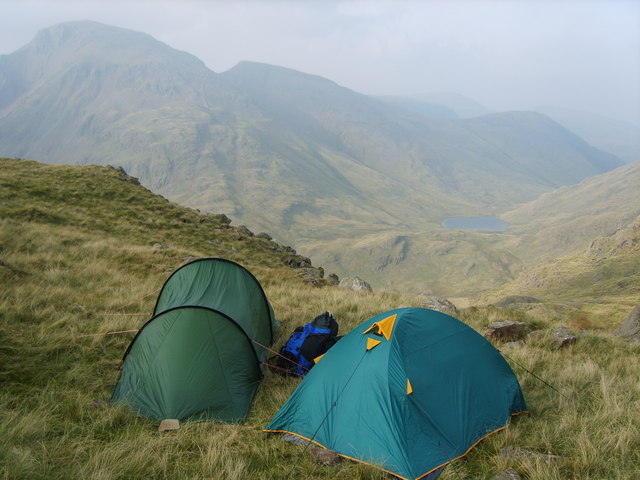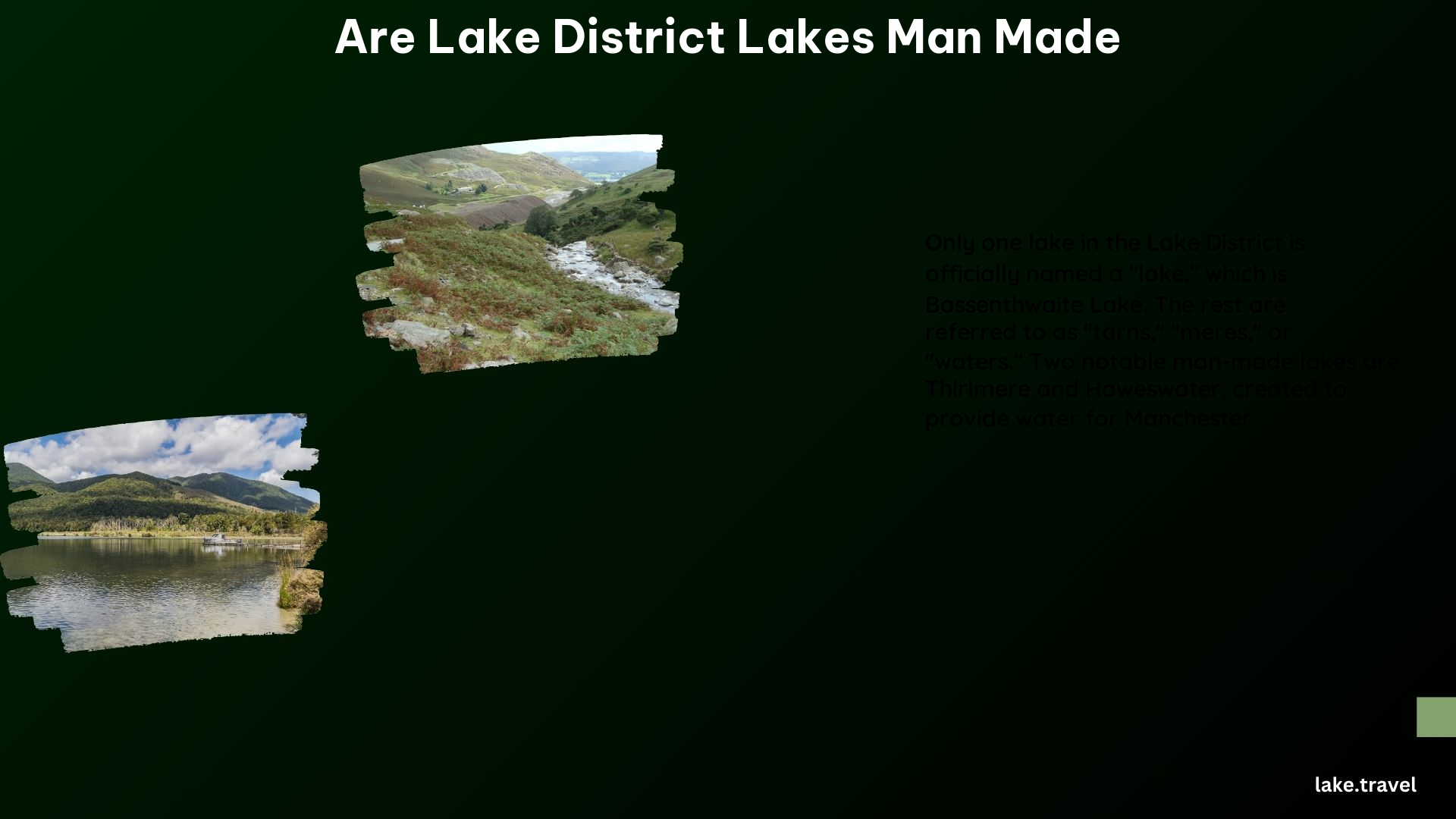The Lake District in Cumbria, North West England, is a picturesque region renowned for its stunning natural beauty and diverse wildlife. While it is often referred to as the “Lake District,” only one of its bodies of water is technically a lake: Bassenthwaite Lake. The others are classified as “tarns,” “meres,” or “waters” due to their different characteristics and origins.
Man-Made Lakes in the Lake District

While the majority of the Lake District’s bodies of water are natural formations, there are a few notable exceptions that were created by human intervention. Two of the most significant man-made lakes in the region are Thirlmere and Haweswater.
Thirlmere
Constructed in 1894, Thirlmere was formed by damming the valley and flooding the villages of Amboth and Wythburn. It is a reservoir that supplies water to the city of Manchester via an aqueduct, which carries the water almost 100 miles by gravity alone.
Haweswater
Similar to Thirlmere, Haweswater was created by drowning the valley of Mardale, including the villages of Measand and Mardale. It is also a reservoir that provides water to Manchester.
Natural Formation of the Lake District

While the two man-made lakes mentioned above were created for the purpose of water supply, the majority of the Lake District’s bodies of water were formed through natural geological processes over millions of years.
Tectonic Plate Collision
Around 500 million years ago, the collision of tectonic plates caused the rocks in the Lake District to fold and uplift, creating the mountains that define the region’s iconic landscape.
Volcanic Activity
Volcanic activity around 450 million years ago produced the Borrowdale Volcanic Group, which forms the base of the mountains in the Lake District.
Glacial Erosion
During the last ice age, glaciers carved out the deep valleys and formed the lakes, including ribbon lakes, that are now a defining feature of the Lake District.
Interesting Facts about the Lake District’s Bodies of Water
- Wastwater: The deepest lake in England, with a depth of 243 feet.
- Windermere: The largest body of water in the Lake District, holding 300 billion liters of water.
- Wildlife: The Lake District is home to a variety of wildlife, including red squirrels, ospreys, and other bird species.
In conclusion, while the Lake District is renowned for its natural beauty, it is important to recognize that not all of its bodies of water are entirely natural formations. The man-made lakes of Thirlmere and Haweswater were created to serve the water needs of the city of Manchester, but the majority of the region’s lakes, tarns, and waters are the result of millions of years of geological processes.
References
- Windermere Marina Village. (n.d.). 15 Facts About The Lake District You Didn’t Know. Retrieved from https://www.windermeremarinavillage.co.uk/15-facts-about-the-lake-district-you-didnt-know/
- Wikipedia. (n.d.). Lake District. Retrieved from https://en.wikipedia.org/wiki/Lake_District
- Lancs Live. (2022, June 25). There is only one Lake in the Lake District – and its not Windermere. Retrieved from https://www.lancs.live/whats-on/whats-on-news/only-one-lake-lake-district-24279071
- Lakeland Retreats. (n.d.). How Was the Lake District Formed? Retrieved from https://www.lakelandretreats.com/history-of-the-lake-district/
- Discovering Britain. (n.d.). Fancy a brew? Why did the Lake District need another man-made lake? Retrieved from https://www.discoveringbritain.org/content/discoveringbritain/viewpoint%20pdfs/Thirlmere%20viewpoint.pdf
